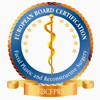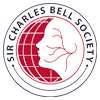What Is Smile Reanimation
Smile Reanimation Surgery is a surgical procedure performed to correct the smile functions that are disrupted due to the loss of function in facial muscles caused by facial paralysis. This procedure is typically applied in cases where facial muscles are weakened or paralyzed due to nerve damage. Through this surgery, asymmetrical smiles and expressions caused by facial paralysis can be corrected with surgical interventions. As part of this operation, smile functionality can be restored by using tissue grafts or muscle transfers taken from healthy muscles to replace paralyzed facial muscles. Additionally, nerve repair is a significant component. Smile reanimation surgery provides substantial improvement in both facial aesthetics and functionality.
Types of Facial Reanimation Surgery
Various types of smile restoration for facial paralysis surgery can be used to ensure facial symmetry, restore function, and achieve a smile. However, factors such as the patient's muscle and nerve condition, age, surgery success rate, and the doctor’s expertise influence the choice of surgery. Therefore, all these factors are considered when selecting a facial reanimation technique. The types of facial reanimation surgery include:
- Free functional muscle flap
- Cross facial nerve graft
- Temporalis muscle flap
- Static support surgery
- Nerve transfer
- Eyelid surgery
- Lower lip surgery
- Eyebrow surgery
- Synkinesis treatments
In some of these surgeries, tendon or nerve additions are performed, while in others, nerves are taken from within the muscles. Therefore, the types of smile restoration for facial paralysis surgery vary depending on the muscle's mobility, position, and function.
The Importance of Smile Restoration
As a result of muscle and nerve deformation, the patient not only loses their smile but also experiences disrupted facial symmetry and loss of muscle control. For example, while trying to move the smile muscle, the eyelids might close suddenly. Additionally, some patients lose chewing and biting functions. Smile restoration for facial paralysis allows facial functions to be regained. It prevents the mouth from drooping downward or the upper lip from being pulled to the side. The goal is to make the smile restoration as effective as a healthy individual's facial muscles and nerves. Besides focusing on the smile, functional losses are also restored, helping patients feel better emotionally and improving their communication.
Additional Smile Reanimation Treatment Options
Although temporal tendon transfer or temporalis myoplasty is one of the best choices for smile reanimation, additional options are available. These supplementary smile reanimation treatment options aim not only to restore the patient’s smile but also to ensure facial symmetry. Functions like biting and chewing can also be regained. The reasons for choosing these additional treatment options include the patient’s muscle and nerve condition, the benefits provided by the treatment, the extent of nerve damage, and the patient’s needs. Based on the patient’s requirements, the additional smile reanimation treatment options are as follows:
- Gracilis Muscle Transfer (Masseter Nerve): The gracilis muscle located in the inner thigh is used for connection. It is attached to the masseter nerve in the affected side of the face, utilizing the nerve source near the smile muscles to reanimate the smile.
- Gracilis Muscle Transfer (Cross-Facial Nerve Graft): This involves using the gracilis muscle from the thigh and a cross-facial nerve graft. The gracilis muscle is connected to the nerve source on the healthy side in a cross manner, enabling the gracilis muscle to find new nerve pathways.
- Nerve Transfer: Healthy nerves are added to the dysfunctional muscles to activate them. This allows healthy nerves to send signals to the damaged area, helping it regain its function.
- Cross-Face Nerve Graft: In cases of facial nerve damage and deformation, a cross-face nerve graft is performed by transferring a nerve from the healthy side to the paralyzed side, allowing the healthy nerve to restore functionality to the paralyzed side.
What is the best smile restoration treatment for facial paralysis?
The condition of the muscles causing facial paralysis determines the type and technique of surgery. The best smile restoration treatment for facial paralysis varies based on the patient. Factors like the doctor’s surgical expertise, duration of the muscle dysfunction, and the timing of facial paralysis influence the choice of smile restoration for facial paralysis surgery. During the initial consultation, the doctor considers the following:
- Patient’s age
- Condition of the muscles and nerves
- Cause of paralysis
- Whether muscle and nerve transfer can provide permanent recovery
- Possibility of facial nerve recovery
- Patient’s preferences
Without examining the patient and assessing the muscle condition, it is incorrect to determine the best technique. Collaborating with the best smile restoration doctor ensures the most suitable method is chosen for you.
The Benefits of Smile Reanimation
Smile reanimation interventions are not singular applications. They affect the patient’s life, health, and mental state in many ways. Damage to the muscles and nerves not only causes functional disorders but also leads to mental issues. Uncontrolled muscle spasms can cause discomfort and pain, especially after intense muscle spasms at the end of the day. Patients may struggle with chewing and biting functions. The benefits of smile reanimation surgery include:
- Restoration of facial symmetry
- Smile reanimation
- Activation of weakened muscles
- Control of hyperactive muscles
- Correction of smile issues
- Regaining chewing and biting functions
- Treatment of facial synkinesis and facial paralysis
- Prevention of involuntary muscle contractions
- Correction of mouth drooping
- Prevention of discomfort inside the mouth
- Enhancement of facial expressions
- Achievement of aesthetic and balanced facial appearance
- Boosting the patient’s self-confidence and self-esteem
Smile Reanimation Recovery
The recovery speed depends on the type of smile restoration for facial paralysis surgery applied. The condition of the muscles and nerves also influences recovery speed. Following postoperative care guidelines can shorten the recovery period.
- Facial supports are applied post-surgery. Drains and support tubes are removed 2-3 days after surgery, and the patient’s general condition is checked.
- Swelling and edema in the face and eyelids decrease within a week. Applying cold compresses helps reduce swelling.
- Bruising from surgery diminishes within 7-10 days.
- A liquid-based diet is recommended post-surgery to avoid straining facial muscles and accelerate recovery.
- Light activities are advised for the first month post-surgery.
- Strenuous activities should be avoided for approximately two months, and ample rest is essential.
- Patients should take a 15-day leave from work for recovery.
- Physical therapy programs should begin three weeks post-surgery to enhance temporalis muscle mobility. Regular facial exercises recommended by facial paralysis therapists help restore the smile.
FAQ
Is Smile Reanimation Right for Me?
Smile reanimation is ideal for patients with conditions like paralysis, facial palsy, and Bell’s palsy, where nerve damage is prevalent. It also suits patients with weak facial nerves or difficulty smiling. For those with limited facial movement and challenges expressing emotions, it offers lasting solutions. A doctor can evaluate your suitability for smile reanimation by examining your muscle and nerve condition.
Does nerve transfer smile surgery provide permanent results?
The success of nerve transfer smile surgery depends on the doctor’s expertise, and the suitability of the nerves and muscles involved. When all factors align, nerve transfer can permanently restore the smile. Adhering to post-surgery physical therapy programs is crucial for restoring muscle functionality and maintaining results.
Is nerve transfer smile surgery painful?
Nerve transfer smile surgery is performed under anesthesia, so no pain or discomfort is felt during the procedure. Post-surgical pain at the incision sites can occur but can be managed with prescribed medications. Over time, pain typically subsides even without medication.
Is a smile immediately restored after 5-7 nerve transfer smile surgeries?
Smile restoration treatments are progressive. Immediate results are unlikely after 5-7 nerve transfer smile surgeries. Adhering to the doctor’s recommendations and physical therapy exercises is essential. Facial expression changes may become noticeable over time.
Are facial exercises necessary after 5-7 nerve transfer smile surgeries?
Facial exercises are mandatory post-surgery as the procedure alone is insufficient. Starting physical therapy three weeks post-surgery and following the therapist’s program are crucial to activating muscles and establishing nerve connections.
At what age can nerve transfer smile surgery be performed?
Nerve transfer smile surgery can be performed in children if needed. Muscle and nerve transfer procedures yield better results in children and young individuals as forming new nerve connections becomes more challenging with age. The decision is made jointly by the doctor and parents when necessary.
Does 5-7 nerve transfer smile surgery leave scars?
Incisions from 5-7 nerve transfer smile surgery leave scars beneath the skin, but these are not as prominent as external scars. Over time, the scars fade, and aesthetic sutures ensure minimal visibility.
Can nerve transfer smile surgery fully restore facial expressions?
The condition of muscles and nerves impacts the restoration of facial expressions post-surgery. Patients previously unable to express emotions adequately due to muscle and nerve disorders can gradually regain their ability to smile and make fine facial movements, improving communication clarity.














